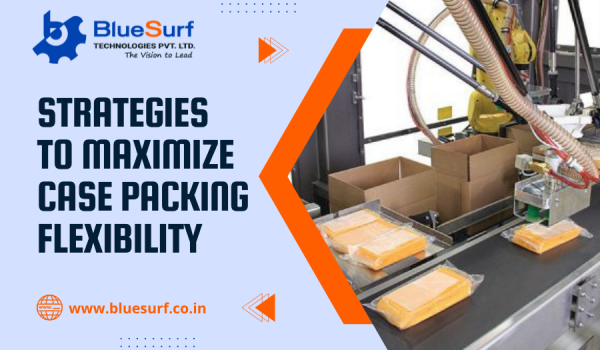Strategies to Maximize Case Packing Flexibility
Strategies to Maximize Case Packing Flexibility

The majority of consumer product companies looking for a custom high speed case packer today want that machine to be versatile. They explain that their proposed packaging line will handle a variety of packages, and that it is critical to be able to accommodate packages that have yet to be designed. Current and future packages will be presented to the case packer in a variety of orientations for possible shipment in Regular Slotted Container (RSC), Half Slotted Container (HSC), trays, five panel wraparound, harness style wraparound, and other style cases.
Manufacturers and co-packers want the flexibility to ship products not only in case counts of 12 and 24, but also in counts of 4, 6, 8, and 10, depending on the needs of their customers. The case packer, on the other hand, must enable high throughput while also minimising changeover time. The operation and maintenance of case packing systems must correspond to the realities of today’s and tomorrow’s workforce skill sets.
To satisfy today’s retail environment, where big box, online, and small and mid-sized specialty retailers all compete for shopper loyalty and patronage, the desire for maximum flexibility, as described above, is required. Retailers of all sizes want something different on their shelves than their competitors. They want products delivered on demand and packaged in a way that reduces handling and waste. They also want product innovations on their shelves and websites to attract and retain customers.
This is a lot of demands to put on a piece of machinery that has traditionally been designed to run a small number of configurations at high speed for 5 to 15 years or more. When looking for maximum flexibility in a case packer, where should the manufacturer and co-packer start?
Are You Looking For Strategies to Maximize Case Packing Flexibility Services?
Bluesurf Technologies automation solutions help prevent inconsistent recipes, unexpected overflows and other mistakes that can produce waste, ruin entire batches, and hurt the bottom line.
- Create a list of specifications that accurately reflect the expected diversity on the line before meeting with the custom original equipment manufacturer (OEM).
- Understand the fundamental capabilities of top load and side load case packers because they are quite different, and this knowledge will be useful background.
- Find and work with an OEM that the acquisition team believes in, because there will inevitably be tradeoffs and compromises. The foundation for a successful project is trust.
As with any equipment purchase, it is critical to select the case packer that is best suited to your specific workflow and business requirements. Make the most of your case packing solution by implementing these strategies to maximise case packing flexibility in your facility.
Put Your Products First
When choosing a case packer solution, your products should be at the forefront of your mind. The products that pass through your packaging line have a significant impact on the pack patterns, case formats, and other packaging details required by your case packer.
You should also consider the packaging dimensions required to safely and efficiently pack your products and move them through the supply chain. These specifications will help you choose a case packer that is suitable for the products that go through your packaging line.
Choose a Packer That Handles Multiple Formats
Different products necessitate distinct packaging solutions. Investing in a case packer that can handle multiple formats is essential for anticipating your needs both now and in the future.
Bluesurf Technologies’ fully automatic case packaging machine is capable of shrink wrapping as well as case packing. This machine can handle all of the traditional case packing formats, including wraparound, tray, and film, allowing you to move all of your products through your packaging line quickly. When you choose a packer that offers automatic format changeovers between packaging formats, you can worry less about format changes and focus more on delivering stable products in high-quality packaging.
Look for Quick Changeover Capabilities
Investing in quick changeover capabilities is a critical strategy for increasing case packing flexibility. A case packer that allows for easy format changes maximises your flexibility while also providing superior uptime efficiency and productivity to your facility. Format changes are performed electronically by Bluesurf Technologies case packers with automatic format-change capabilities, without the assistance of operators. This saves employees’ time and allows products to pass through this stage of your packaging line with less supervision.
Bluesurf Technologies’ case packer’s solution aids in the optimization of your workflow and the delivery of dependable product packaging. Please contact us right away to find the best case packing solution for your facility’s packaging line.
